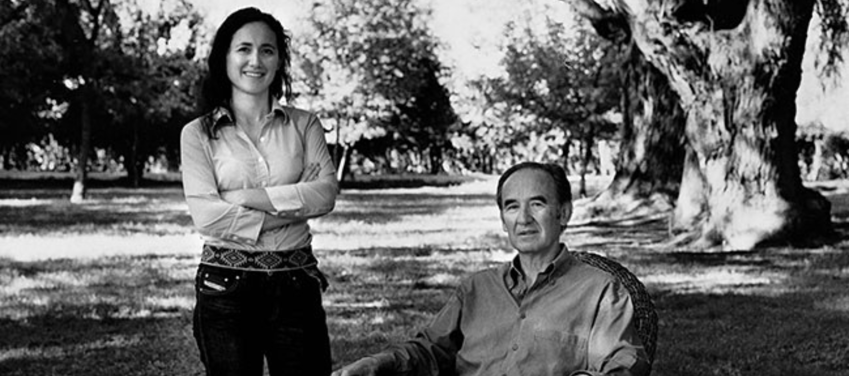Moments in Wine: The Americas
With the spread of European colonists, the Americas emerged as a new winemaking power. Here are some of the key moments in the history of wine in the Americas.
USA
16th century: Spanish and French settlers plant vines across the country
Spanish and French settlers are believed to have planted vines and made wine at various points around the modern US from the 16th century onwards. The first vineyard and winery in California was founded by Spanish missionaries in 1769.
1850s: Haraszthy establishes viticulture in California
Californian viticulture takes off in the 1850s, with Hungarian immigrant Agoston Haraszthy regarded as ‘the father of modern viticulture in California’ for his work on vineyard management, site selection and planting experimentation with different varieties.
1889: Napa Valley wines win big at the Paris Exhibition
At the Exposition Universelle in Paris in 1889, wines from Napa Valley win 20 of the 34 awards given to American wines, highlighting its status as a premium wine region even at this early stage.
1906: Phylloxera and earthquakes devastate California
An outbreak of phylloxera (attacking ungrafted European vine roots), economic downturn, and the disastrous San Francisco earthquake of 1906 destroys millions of litres of wine and many vineyards, forcing the industry onto the back foot.
1920: Prohibition kicks off and wipes out much of the industry
The Volstead Act comes into effect in 1920, leading to Prohibition in the US for the following 13 years. Many vineyards are lost or abandoned, while those that survive get by producing wine for religious and medical purposes or selling grapes for the (legal) home-winemaking hobby.
1976: Judgement of Paris shines a light on fine wine from the US
In 1976, the Judgement of Paris sees a number of US wines outperform several of their prestigious French counterparts in a blind tasting. The event heralds the resurrection of the US wine industry and the fine wine potential of the country’s leading estates.
1979: AVA system is established
The American Viticultural Areas (AVAs) are established in 1979 – fulfilling a role similar to that of the Appellation system in Europe – to guarantee the growing region of origin. There are currently 276 AVAs
Chile
16th century: Vine cuttings brought to modern Chile
Spanish conquistadors and missionaries bring vine cuttings to Chile in the 16th century. Early plantings are concentrated in the cooler south of the country and use a variety thought to be an ancestor of País; a variety that formed the backbone of Chilean winemaking for centuries and is enjoying a modern revival.
1641: New World imports banned
Spain bans the importation of wine from its New World colonies in 1641, causing the winemaking industry to almost collapse and leading to a rise in distilling for pisco and aguardente.
1741: Lord Byron's grandfather enjoys Chilean hospitality
Admiral John Byron, grandfather of the poet Lord Byron, is shipwrecked off Cape Horn in 1741. The surviving crew made it to Chile and are detained by the Spanish authorities. After returning home, Byron writes favourably of the Chilean Muscatel he drank in Santiago.
19th century: French vines cross the Atlantic
The 19th century sees an influx of French grape varieties and vineyards planted around Santiago. This forms the nucleus of the modern Chilean wine industry, which is bolstered by an influx of foreign expertise and investment into the 20th century.
1980s: Chilean wine takes its place on the world stage
The 1980s sees another quantum leap forward for Chilean wine, with further external collaboration and the introduction of up-to-date winemaking equipment that helps Chile cement its reputation as a producer of reliable, everyday wines, just as global wine consumption begins to rise.
From the 1980s to 2000s, Chile’s fine wine potential is also nurtured through collaborations with leading wineries. Concha y Toro and Château Mouton Rothschild create Almaviva together, and the Chadwick and Mondavi families produce Seña, among others.
1994: Carmenere rediscoverd in Chilean vineyards
Thought to be completely wiped out by phylloxera, DNA testing in 1994 led to the rediscovery of Carmenere in Chile.
Argentina
1557: Grape vines introduced across Argentina
During the Spanish colonisation of the Americas, vine cuttings were brought to Santiago del Estero in 1557, and the cultivation of grape and wine production stretches first to neighbouring regions, and then to other parts of the country.
1800s: Malbec has landed
Future president of Argentina, Domingo Sarmiento, instructs the French agronomist, Miguel Aimé Pouget, to bring French varieties into Argentina. It is believed that one of them is Malbec, which will go on to become the country’s emblematic wine grape.
1994: Catena explore new styles with high elevation wines
Nicolás Catena Zapata is credited with elevating (literally and figuratively) the profile of Argentine Malbec, seeking greater freshness and precision with plantings at higher elevations and clonal selection. In 1994 he plants the first vineyard above 1,500m, in the district of Tupungato.

